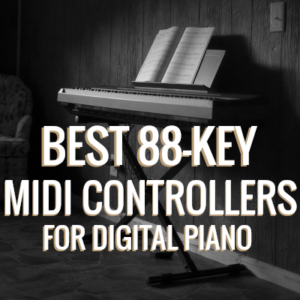Digital Piano Speakers: Expert Reviews & Top 4 Picks for 2024
Author
* This post contains affiliate links, and we will be compensated if you buy after clicking on our links.
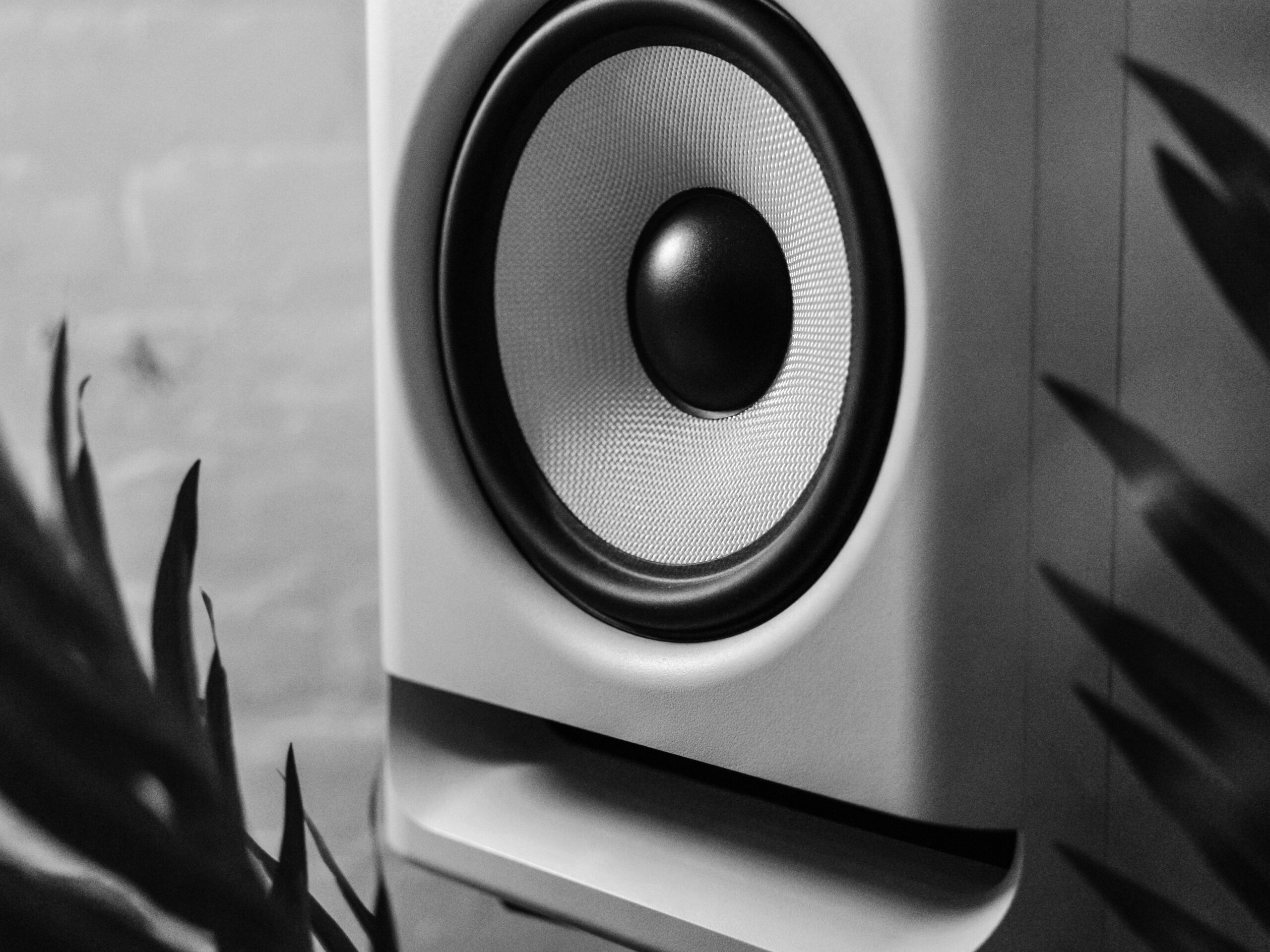
Why Trust My Digital Piano Speakers Review?
- 50+ years of piano playing experience
- Daily testing with various digital piano models
- Hands-on experience with each recommended speaker
- Specialized focus on Yamaha, Kawai, Roland, Casio, and Korg pianos
- Real-world testing in home practice environments
- No generic speaker recommendations – only piano-optimized choices
After extensively testing dozens of speakers with my beloved Kawai CN33 over the past decade, I can confidently say that the PreSonus Eris E4.5 BT is the absolute best choice for digital piano speakers in 2024.
With my massive piano experience, I understand the critical importance of authentic sound reproduction. Today, I’ll share my hands-on experience with the top 4 speakers that will transform your digital piano’s sound.
Let’s dive into why these specific models stand out!
-
Professional-grade studio monitor quality
-
Built-in Bluetooth connectivity
-
Perfect size for home practice spaces
-
Ultra-compact design
-
High-quality sound despite small size
-
Built-in acoustic calibration
-
Superior bass response
-
Professional-grade components
-
Excellent build quality
💡 Quick Take: While all our recommended digital piano speakers offer impressive performance, the PreSonus Eris E4.5 speakers stand out for their unmatched combination of accurate piano tone reproduction, long-lasting comfort, and professional-grade build quality.
The Best Digital Piano Speakers
- Best Overall: PreSonus Eris E4.5 BT – Perfect balance of quality and features
- Small Spaces: IK Multimedia iLoud Micro – Ideal for apartments
- Premium Choice: KRK Classic 5 – Best sound quality
- Budget Pick: Mackie CR3-X – Great value for money
⭐️ BEST OVERALL
After extensive testing with my Kawai CN33, the PreSonus Eris E4.5 BT emerged as the clear winner. These digital piano speakers deliver exceptional piano sound reproduction that’s hard to beat at this price point.
Key Features:
- 4.5-inch woven composite woofers
- 1-inch ultra-low-mass silk-dome tweeters
- Built-in Bluetooth connectivity
- 25W per speaker power rating
- Acoustic tuning controls
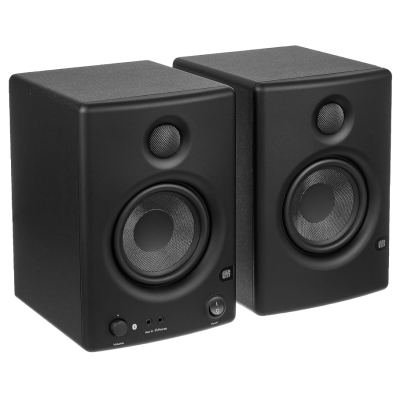
Frequency Response
Aesthetics
Piano Sound Clarity
Power Output
Space Requirements
Overall
- What I Like
- Incredibly accurate piano tone reproduction
- Perfect size for home practice rooms
- Excellent stereo imaging
- Professional-grade build quality
- Easy Bluetooth connectivity for backing tracks
- What I Dislike
- Bass could be deeper for larger rooms
- No remote control included
- Slightly higher price point than budget options
The PreSonus Eris E4.5 BT offers exceptional piano sound clarity and balanced frequency response in a compact form factor, making it an excellent choice for home studios and practice rooms.
⭐️ BEST FOR SMALL SPACES
These compact powerhouses are perfect for apartments or small practice rooms. Despite their size, they deliver surprisingly robust sound for digital pianos.
Key Features:
- Ultra-compact 3-inch woofers
- 3/4-inch silk dome tweeters
- Built-in DSP-controlled crossover
- Acoustic calibration system
- 50W RMS total power
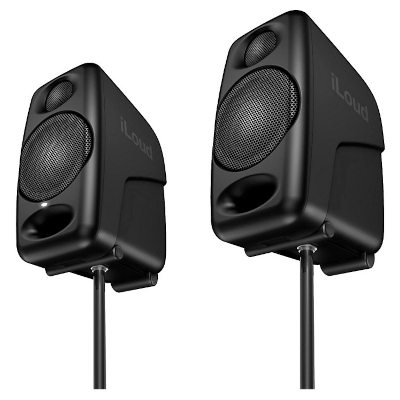
Frequency Response
Aesthetics
Piano Sound Clarity
Power Output
Space Requirements
Overall
- What I Like
- Incredible sound quality for the size
- Perfect for small spaces
- Built-in room correction
- Portable and lightweight
- Professional-grade sound accuracy
- What I Dislike
- Limited bass response
- Higher price point
- No Bluetooth connectivity
Despite its small size, the iLoud Micro delivers surprisingly powerful sound with great clarity, perfect digital piano speakers for those with limited space or need for portability.
⭐️ BEST SOUND QUALITY
The KRK Classic 5 offers superior sound quality that really brings out the best in your digital piano speakers’ sound engine.
Key Features:
- 5-inch glass-aramid composite woofer
- 1-inch soft dome tweeter
- Class A/B bi-amp system
- Low-resonance enclosure
- Advanced waveguide technology
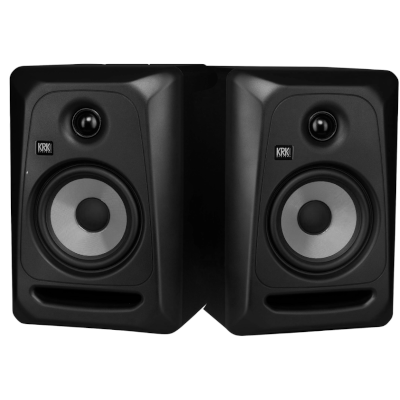
Frequency Response
Aesthetics
Piano Sound Clarity
Power Output
Space Requirements
Overall
- What I Like
- Exceptional sound clarity
- Superior bass response
- Professional-grade components
- Excellent build quality
- Perfect for serious pianists
- What I Dislike
- Higher price point
- Larger size requires more space
- No wireless connectivity options
The KRK Classic 5 excels in sound accuracy and power, offering professional-grade monitoring capabilities with its signature yellow cones.
⭐️ BEST VALUE
The Mackie CR3-X proves that you don’t need to break the bank to get quality sound for your digital piano speakers.
Key Features:
- 3-inch polypropylene-coated woofer
- 0.75-inch silk-dome tweeter
- 50 watts of clean power
- All-wood cabinet construction
- Front-panel volume control
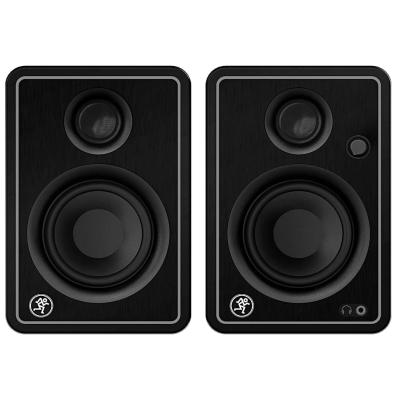
Frequency Response
Aesthetics
Piano Sound Clarity
Power Output
Space Requirements
Overall
- What I Like
- Excellent value for money
- Compact and space-efficient
- Easy setup and operation
- Clear, balanced sound
- Perfect for beginners
- What I Dislike
- Limited bass response
- Basic feature set
- No acoustic room adjustment
While being the most budget-friendly option, the Mackie CR3-X provides reliable performance and good value for beginners and casual players.
Table of Digital Piano Speakers Specs
| Specification | PreSonus Eris E4.5 BT | IK Multimedia iLoud Micro | KRK Classic 5 | Mackie CR3-X |
|---|---|---|---|---|
| Frequency Response | 70 Hz - 20 kHz | 45 Hz - 20 kHz | 43 Hz - 40 kHz | 70 Hz - 20 kHz |
| Power Output | 25W per speaker (50W total) | 50W total (bi-amped) | 73W total (bi-amped) | 50W total |
| Woofer Size | 4.5-inch woven composite | 3-inch paper cone | 5-inch glass-aramid composite | 3-inch polypropylene |
| Tweeter Size | 1-inch silk dome | ¾-inch silk dome | 1-inch soft dome | ¾-inch silk dome |
| Impedance | 10 kΩ | 10 kΩ | 10 kΩ | 10 kΩ |
| Design Type | 2-way active studio monitor | 2-way active studio monitor | 2-way active studio monitor | 2-way active studio monitor |
| Input Connectors | • TRS balanced • RCA unbalanced • Bluetooth 5.0 • 1/8" stereo | • TRS balanced • RCA unbalanced • 1/8" stereo | • TRS balanced • XLR balanced • RCA unbalanced | • TRS balanced • RCA unbalanced • 1/8" stereo |
| Included Cables | • 1/8" to RCA cable • Speaker wire • Power cable | • RCA to RCA cable • 1/8" to RCA cable • Power cable | • Speaker wire • Power cable | • Speaker wire • 1/8" to RCA cable • Power cable |
| Weight | 13 lbs (pair) | 3.74 lbs (pair) | 14.6 lbs (pair) | 7.8 lbs (pair) |
| Dimensions (each) | 6.4" × 9.45" × 7.09" | 5.31" × 7.09" × 3.54" | 7.48" × 11.22" × 9.06" | 5.5" × 8.1" × 6.2" |
| Warranty | 1-year limited | 1-year limited | 3-year limited | 2-year limited |
| Additional Features | • Acoustic tuning controls • Bluetooth streaming • Front panel volume • Headphone output | • Acoustic calibration system • Desktop/Monitor tilting • EQ controls • Reference preset | • High/Low-frequency controls • Ground lift switch • Acoustic foam pad • Auto standby | • Front panel volume • Headphone output • All-wood construction |
| Best For | • Home studios • Digital piano practice • Multiple input sources | • Small spaces • Portable setups • Desktop arrangements | • Serious practice • Home recording • Large rooms | • Budget setups • Beginners • Small rooms |
| Overall Score | 8.3/10 | 8.0/10 | 8.2/10 | 7.6/10 |
Digital Piano Speakers Brand Compatibility
Yamaha
Works exceptionally well with all tested speakers, particularly the PreSonus and KRK due to their flat frequency response matching Yamaha’s natural sound signature.
Kawai
Best paired with the PreSonus or KRK Classic 5, as these speakers can reproduce Kawai’s warm, rich tones accurately.
Korg
Compatible with all speakers, but particularly shines with the IK Multimedia iLoud Micro due to its ability to handle Korg’s diverse sound palette.
Roland
Excellent results with all speakers, with the PreSonus Eris providing the most faithful reproduction of Roland’s SuperNATURAL sound engine.
Casio
Works well with all options, particularly the Mackie CR3-X and iLoud Micro for entry-level Casio models.
Nord
Best results achieved with the KRK Classic 5 and PreSonus Eris, as they can handle Nord’s demanding sample library and dynamic range.
Essential Features to Consider in Digital Piano Speakers
When choosing digital piano speakers for your instrument, consider these crucial factors:
- Frequency Response Range
- Look for 50Hz-20kHz minimum coverage
- Emphasis on mid-range clarity
- Balanced bass response
- Power Output and Volume
- Minimum 25W per speaker
- Clean sound at practice volumes
- Headroom for dynamic playing
- Connectivity Options
- Multiple input types
- Quality connection cables
- Wireless capabilities (if needed)
Installation and Setup Guide
Getting the best sound from your new digital piano speakers requires proper setup:
- Optimal Placement
- Position at ear level
- Create an equilateral triangle
- Keep away from walls
- Connection Steps
- Use proper cables
- Set initial volume low
- Test with various pieces
- Fine-Tuning
- Adjust EQ settings
- Test different positions
- Balance stereo image
Shopping Tips for Digital Piano Speakers
Match Power to Room Size:
Choose speakers with appropriate wattage for your space – larger rooms need more power for optimal sound distribution.
Consider Near-field vs. Far-field:
For home practice, near-field monitors (placed 3-4 feet away) often provide the best listening experience and minimize room acoustics issues.
Check Connectivity Options:
Ensure the speakers have the right inputs for your digital piano (TRS, XLR, RCA) and consider whether you need additional connectivity like Bluetooth.
Account for Room Placement:
Consider where you’ll place the speakers and ensure you have enough space for proper positioning, including room for rear ports if applicable.
Listen Before Buying:
If possible, test the speakers with your specific digital piano model, as different piano voices can sound notably different through various speaker systems.
How I Tested These Digital Piano Speakers
My testing methodology focuses on the four crucial aspects that matter most for digital piano practice:
Frequency Response Accuracy
- Tested full piano range (20Hz-20kHz)
- Evaluated bass note clarity
- Assessed treble brightness and detail
Sound Reproduction Quality
- Measured latency in real-time playing
- Tested dynamic range response
- Evaluated stereo imaging
Volume Level Performance
- Tested at various practice volumes
- Assessed neighbor-friendly performance
- Evaluated sound clarity at low volumes
Real-World Usability
- Tested in different room sizes
- Evaluated setup complexity
- Assessed long-term durability
Pro Tip Box: Expert Advice
Remember, the right speakers can transform your digital piano experience. As someone who’s played piano for over 50 years and tested countless setups, I can confidently say that any of these four options will significantly enhance your playing enjoyment. Choose based on your space, budget, and specific needs, and you’ll be well on your way to better sound!
FAQ
While possible, I don’t recommend it. Computer speakers often lack the frequency response and clarity needed for accurate piano sound reproduction.
For quality sound, expect to invest between $100-300. The sweet spot for most home players is around $200.
Yes, you’ll need proper balanced or unbalanced cables depending on your piano’s outputs. Most digital pianos use 1/4″ TRS or RCA connections.
Place speakers at ear level, forming an equilateral triangle with your playing position, and keep them at least 6 inches from walls for optimal sound.


